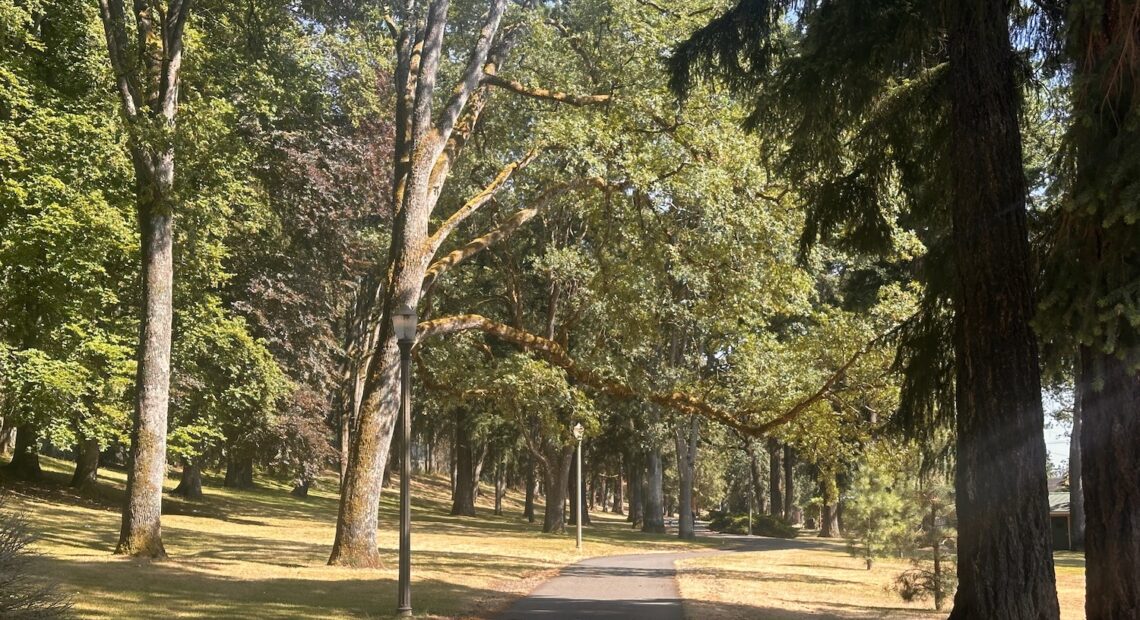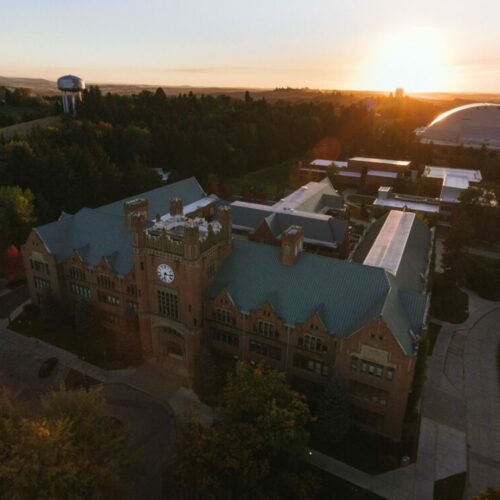
Tacomans struggle with high temperatures, heat and access to cooling varies across the city
Listen
(Runtime 1:17)
Read
Four days a week, Kevin Ruby’s team is responding to calls and often complaints about people experiencing homelessness in Tacoma.
“We always are trying to put people in touch with resources,” Ruby said. “It’s just the resources right now, this week, last week, this time of year in general include a lot more often water, cooling shelters, transportation to cooling shelters and information regarding all of that.”
Ruby’s team, called the Homeless Engagement Alternatives Liaison (HEAL) team, is the city’s alternative response to concerns about people living on the street. While the full HEAL team does have four police officers, Ruby’s outreach team includes eight people who work in different quadrants of the city providing resources. Sometimes, they connect people to shelter space.
Last year, the city banned encampments on public property in certain parts of the city. The HEAL team will go out in advance of an encampment clearing to inform people.
During inclement weather, the city pauses any encampment clearings.
This time of year, Ruby said his team sees an uptick of people staying in public parks, trying to keep cool.
“People are finding shade any way they can,” Ruby said.
Shade is a problem for Tacomans. The city is dense and in the Puget Sound region, it has the lowest amount of tree canopy cover for cities.
This city lacks the infrastructure to respond to heat events, said Ailene Ettinger, a quantitative ecologist with The Nature Conservancy.
“In the past, this region hasn’t experienced a lot of summer heat,” Ettinger said. “Many homes, many rental facilities, many businesses, even workspaces, don’t have adequate cooling installed.”
This infrastructure includes conventional air conditioning, as well as tree canopy cover in neighborhoods. As part of a research project in collaboration with the University of Washington, Ettinger’s team is tracking temperatures in parts of South Tacoma, a neighborhood with some of the least amount of green space in the city.
“Often, the temperatures that we recorded in this neighborhood are higher than the temperatures recorded at weather stations and climate stations,” Ettinger said.
This week, the HEAL team reached about 80 people. Many of those interactions had to deal with heat-related struggles. Some outreach officers were even able to find a couple and their infant space in a tiny home, so they could get out of living in their vehicle, which no longer ran.
On July 9, the hottest day this week, temperatures in South Tacoma reached 98 degrees, which was two degrees hotter than the recorded high of 96 for the city, according to the National Weather Service.
Tree canopy coverage has been shown to reduce temperatures, even within neighborhoods. One forested park in South Tacoma, called South Park, had recorded highs two degrees cooler than other areas in the neighborhoods, Ettinger said, demonstrating how green space can keep an area cooler.
“Planting trees can really contribute to cooling,” Ettinger said.
The city of Tacoma responds to temperatures of 90 degrees or more with opening cooling centers for daytime, and if needed, nighttime relief.
Ruby said there is enough shelter space available for the city’s unhoused population, but even if there is enough space, it may not meet an individual’s needs or wants.
Sometimes, the location of a shelter or its setup as a congregate environment can be problematic for an individual. That might be a barrier to providing them safe housing, especially when the weather itself poses dangers.
















